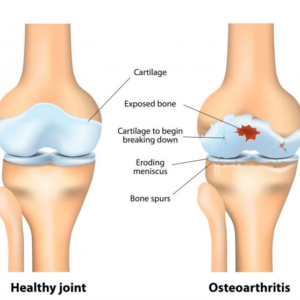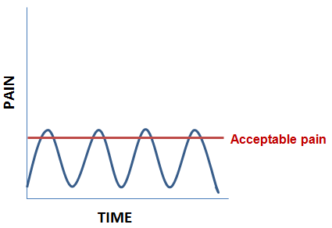The main symptoms of early osteoarthritis are:
- Pain – The pain tends to be worse when you move your joint or at the end of the day. As shown on the graph, you are able to tolerate the symptoms for the majority of the time with only brief episodes where the joint is disabling
- Stiffness – Your joints may feel slightly stiff after rest, but this usually wears off quickly as you get moving
- A grating or grinding sensation (crepitus) – Your joint may creak or crunch as you move – this is normal for osteoarthritic joints – do not be afraid to move them.
- Swelling – The swelling is soft caused by extra fluid, and an sometimes be warm/ hot to the touch
- Muscle weakness – the muscles around your joint may look thin or wasted and you might experience difficulty with some activities eg: going up and down stairs
- Not being able to use your joint normally – Your joint may not move as freely or as far as normal. Sometimes it may give way because your muscles have weakened or your joint has become less stable. Exercises to strengthen your muscles can help to prevent this
Your symptoms will often vary for no clear reason – you’ll probably have good and bad spells. Some people find that changes in the weather make the pain worse, especially damp weather along with falling atmospheric pressure. Others find the pain varies depending on how active they’ve been.

